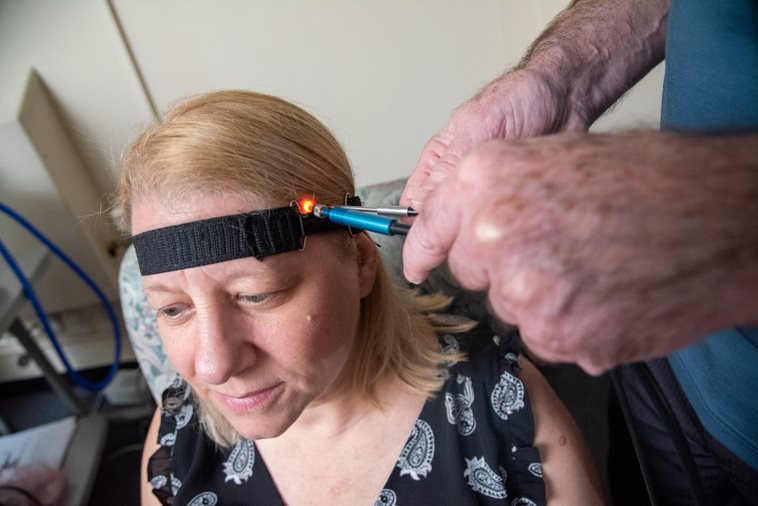Researchers with the VA Bedford and VA Boston health care systems have developed a non-invasive optical technique to help detect Alzheimer’s disease. The new technique uses spectroscopy – measuring how light is scattered and absorbed when passing through matter – to identify structural changes in the brain.
This scanning method could become a simple, completely non-invasive method of early Alzheimer’s detection, according to the researchers, and also has potential as a way to assess the effectiveness of treatment.
“This technology is significant because it probes the biochemical and cellular structures of the brain noninvasively with a technique that is inexpensive and could be put into widespread use,” explains Dr. Eugene Hanlon of the VA Bedford Healthcare System, corresponding author on the paper. “Most importantly, it gives useful information about those with mild cognitive impairment.”
The results appeared in the June 1, 2021, issue of the Journal of Alzheimer’s Disease.
The difficulty of detecting Alzheimer’s disease
Alzheimer’s disease is a progressive neurodegenerative disease. It is the leading cause of dementia. Alzheimer’s typically leads to serious medical complications that result in death. No cure currently exists, although medication and supportive treatments can temporarily relieve symptoms.
Alzheimer’s is hard to definitively diagnose at an early stage. Because symptoms are often subtle and gradual at first, the ongoing, irreversible damage is not easy to detect until it is more advanced. Alzheimer’s can definitively be diagnosed only by analyzing brain tissue after death.
While detecting Alzheimer’s disease in a living patient is difficult, imaging technology has made strides toward this goal in recent years. Positron emission tomography (PET) and magnetic resonance imaging (MRI) allow for high resolution images of brain features. These scans can show structural changes related to Alzheimer’s, such as twisted fibers within brain cells and amyloid plaques (misfolded proteins that accumulate between brain cells). They can also detect dynamic features, such as how brain cells use glucose.
However, imaging scans such as PET and MRI are expensive, technically demanding, and contribute little to early detection.
Using light to scan for Alzheimer’s disease
VA researchers have developed a new technique that uses light to capture chemical and structural information from brain tissue. The technology works by positioning two fiber-optic probes on the surface of a patient’s temple. One probe delivers near-infrared light non-invasively and harmlessly into the patient’s brain. The other probe collects the light that scatters back.
Near-infrared light – light just at the border of the infrared region of the electromagnetic spectrum – is particularly useful for examining the brain, according to the researchers. It can penetrate deeply into the tissue because the light is only weakly absorbed. This allows for areas of the cerebral to be probed.
Spectroscopy works by measuring how light moves through and bounces off matter. Different substances block light energy to different degrees, causing the light to be absorbed or scattered. The light is affected at different wavelengths of energy depending on what matter it interacts with. These effects are measured by comparing the light from the source optical fiber with the light collected by the detector fiber. The light detected differs from the initial light because of interactions with the brain tissue.
More Information
Click here to read the full story.
Click here to learn more about VA research.
Topics in this story
More Stories
Over the five-year program, more than 14,000 VET TEC beneficiaries completed their program and nearly half have reported finding meaningful employment with an average starting annual salary of $65,000.
VA is calling for applicants for the 2024 Specially Adapted Housing Assistive Technology grant.
Updated COVID vaccines are available free of charge to Veterans receiving care at VA .







This is really amazing. Alzheimer’s disease is not something you wish on anyone
Wonderfull
This is wonderful cutting edge news.
Thank you VA healthcare providers!
Would like to be tested if there is going to be on going 168trials